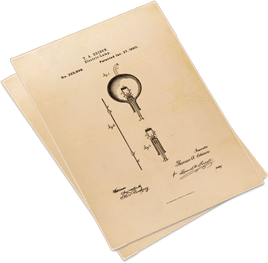If you are a freelance writer, artist, photographer, composer, performer, Web designer — anyone who does creative work for others, you need to know what the term “Work For Hire” means.
If you are a business who hires independent contractors to produce creative works for you, you need to know what the term “Work For Hire” means.
You need to know because the term “work for hire” in copyright law is counterintuitive. It does not mean what most people expect it to mean, and assuming it means what it seems to mean can be the source of controversy and, yes, heartache (not to mention financial loss).
This question appeared in a Quora thread:
How much is Stan Lee making from each of these blockbuster Marvel films?
To which producer Ken Miyamoto replied in part:
Stan Lee wrote for Marvel as a writer for hire. He doesn’t own any of the characters, despite being the creator of many of them, most notably Spider-Man and The X-Men.
That reminded us of how misunderstood is the term “Work For Hire,” a term that comes straight out of the copyright statute and appears in the various applications for copyright registration you might use.
A creative work and the right to make and distribute copies and derivative works (the copyright) belongs exclusively to the author (creator or performer) of the work until the copyright, or a part or division of the copyright, is transferred to someone in writing – with these important, non-obvious exceptions:
When an employee of a company creates a work in the course of employment, that is a work for hire, the company is the “author” of the work, and the copyright in the work belongs to the company that pays the employee’s salary or wages. While the rules differ from state to state, an employee is generally a person whose schedule is set by an employer who pays the employee a regular salary or wage and withholds taxes. An independent contractor, on the other hand, someone contracted or commissioned to accomplish a task over a period of time for an agreed fee, is not an employee.
A work can be made a “work for hire” when the author (creator or performer) says that it is in writing. The “writing” does not need to be formal or fancy. It can be part of a contractor agreement or any other formal work agreement, but it can be as informal as an email from the author to the person or company who gave the author the commission to create the work, whether or not for pay. Freelance writers and artists, for example, whether submitting work assigned by an editor or submitting the work unsolicited “over the transom,” usually put the rights being offered — “First North American Serial Rights” and so forth — in the cover letter or on the top of the first page. Then upon acceptance and publication, the rights offered in the work become a “Work For Hire,” and the person or company who published (made public use of) the work becomes the claimant and owner of that published version of the work to the extent of the particular rights given.
When a company owns the copyright in a work as a work for hire, the company may attribute the work to the actual creator or creators of it, but they don’t have to. And if the company registers its claim of copyright in the work, they may identify the actual creator or creators of it, but there is no obligation to do so.


